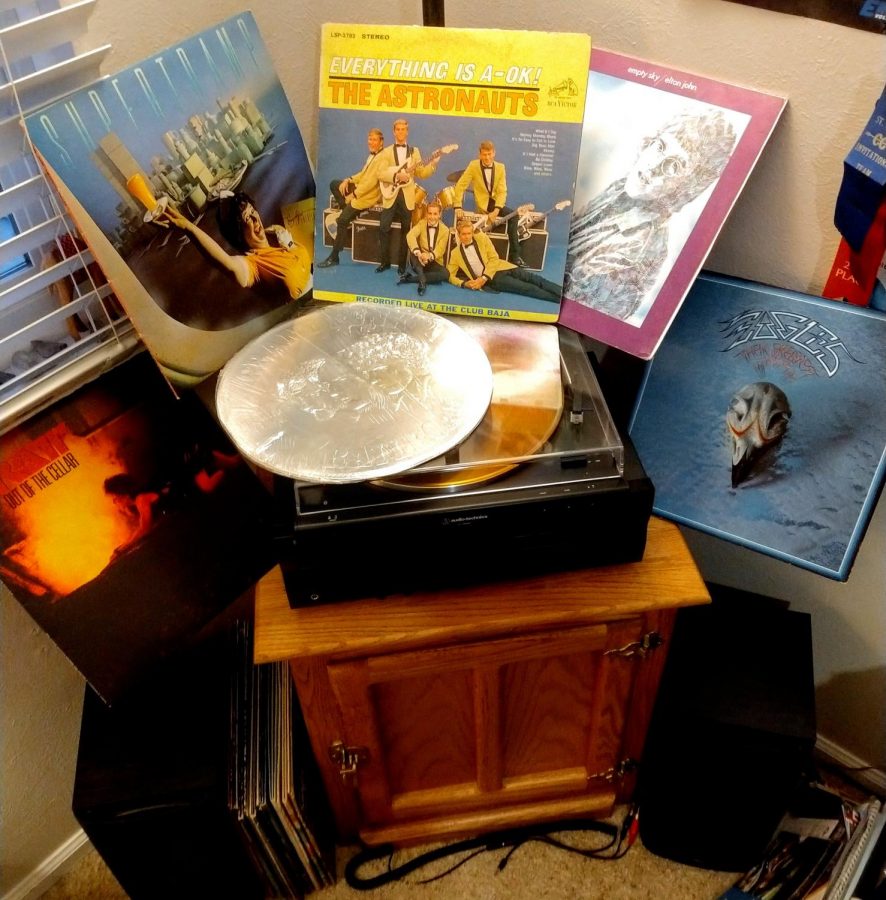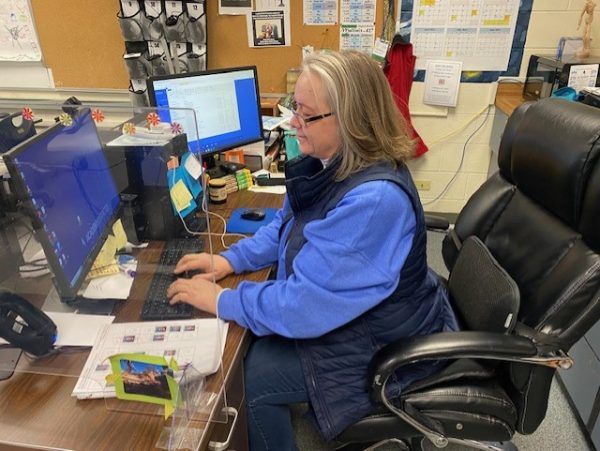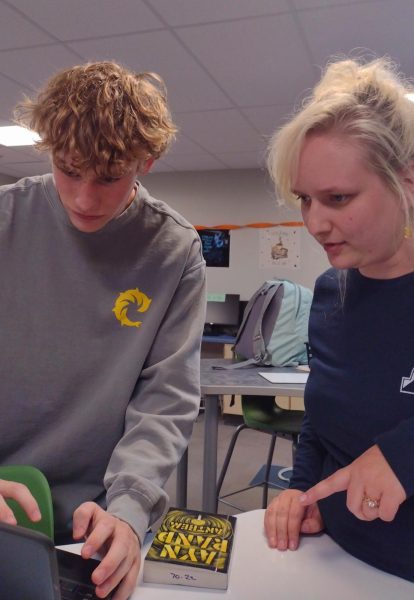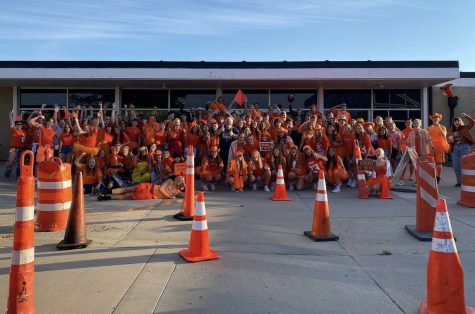Turning the Tables With Musical Formats
A few of Alex Maline’s (my) records, graciously gifted by his Grandfather, Ron Wade. The shown records left to right and then center are: Ratt “Out of the Cellar” (released in 1984 but bought recently), original Supertramp “Breakfast In America” (released in 1979), original The Astronauts “Everything Is A-OK” (released in 1963), an original European bought Elton John “Empty Sky” (released in Europe in 1969, not released in the US until 1975), The Eagles “The Eagles Greatest Hits 1971-1975” (released in 1976), and Grand Funk Railroad “E Pluribus Funk” (released in 1971).
Usually found in your grandparent’s house, in a dusty box, are big, square worn paper covers with slightly unfamiliar band names and art printed from a time long ago. Possibly seen on Youtube or iTunes, these are albums your grandparents bought in their youth or adulthood. Sheathed in the brittle, yellowed, cardstock envelope apparatus is a thick black disk with hundreds of little rings grouped tightly together on both sides; these are the tracks. In between the tracks are spaces which is the transition to the next song, and the rings all lead into the center of the disc.
These are vinyl records, likely to be 12” Long Play (LP) programs played at 33.3 rotations per minute on a turntable via a needle attached to an arm. To most younger folks, this may seem like an even sillier, shelf space-eating way of having recorded music than CDs or 8-tracks and tapes (if those are even recognized these days).
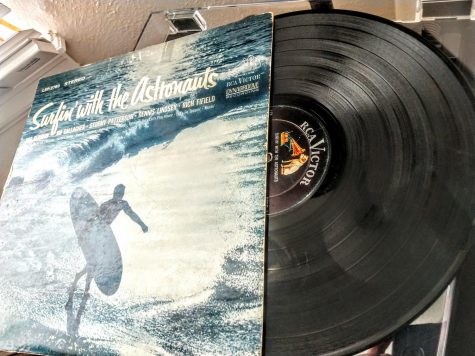
Since the introduction of digital music formats such as Apple iTunes, Spotify, Google Play, or the predecessor to both, simply just mp.3 (audio) files, the warm crackle-y vinyl records have declined in sales, leaving decent numbers of young people in the digital age unfamiliar with them.
Despite digitally formatted music being extremely accessible, portable, and taking little to no physical space, however, records have been surviving, and people are still buying them. New people in their youth who are buying current artist’s new music, and of course being exposed to the now-classic music of the past along the way.
“I feel like [vinyl records] are a part of pop culture and some people just prefer the old fashioned way. Bands are having their new releases pressed into vinyl which are bringing them back,” said freshman Anne Shelton.
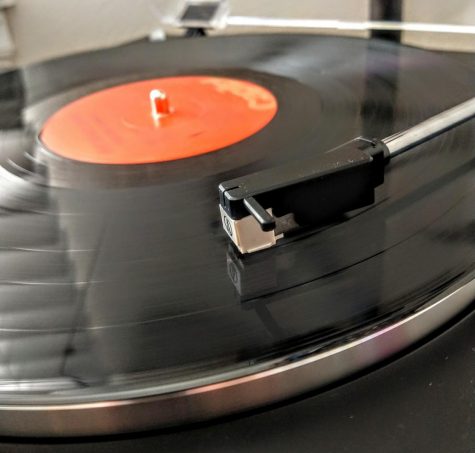
Some artists in recent years have been releasing their albums both digitally and on vinyl. According to Poor Stuart’s Guide, well-known artists like Iggy Azalea, Tyler the Creator, Halsey, Kacey Musgraves, Slipknot, Ed Sheeran, The 1975, Billie Eilish, Tame Impala, and Harry Styles, among many others, release new albums in the form of LPs.
In 2018, 7.9 million LPs were sold and in 2019, 26% of all physical albums sold were on vinyl; according to Keith Caulfield from Billboard.
One of the most notable qualities of vinyl is its unforgettable sound virtues; cordial and bright yet profound and full. Tinny, exorbitantly-perfectionistic and compressed sounding audio mixes are all too common in today’s world.
Records may be outdated technology, however, they are irreplaceable. Records, quite possibly, are as rotund and full-bodied as recordings can get.
“The sound is wonderful, you get a rich and organic tone and hear more intricacies than with digital music or even CD’s,” said AAHS sophomore Drew Lyle.
“I love the different and enjoyable sounds. Rather than putting in earbuds, it’s really nice to put on a real record,” said AAHS sophomore Elianne Rossel.
People who grew up with records as the current technology or as the previous generation of technology remember their memories of such devices well. Often, though, they have kept up with the front of the technological advancements and rid themselves of their vinyls.
“I’m surprised that [records] are coming back; I don’t have mine anymore, but I hope the trend continues because they’re great! They have a fantastic sound quality,” said Air Academy High School Librarian Patrice Geis.
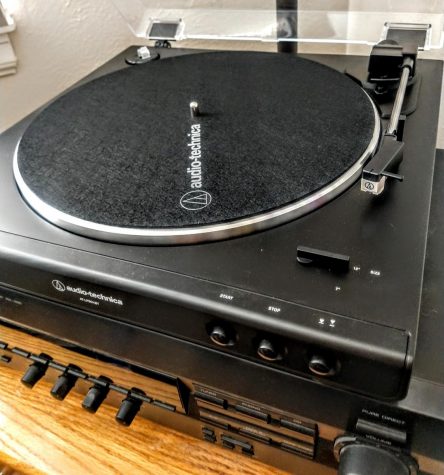
In a bustling school like that of AAHS, numbers of students who listen to records aren’t particularly impressive. A mere handful of those available for interviews knows of the blissfully unique and near-obsolete form of musical enjoyment.
Most of the teaching staff or district employees have likely had their run with records and have something to contribute to a conversation on the topic.
To those who crave the newest, latest and greatest technology, or have no patience for such superseded practices, obviously won’t stop and take a second glance at vinyls. To those who know and appreciate vinyls, however, may a special place in their hearts remain for them.
However, to those who haven’t been in contact with records or are curious as to why they still exist–a trip to a local Independent Records or even a boutique record store such as Leechpit Records and Vintage will be worth their time.

Howdy!! I'm Alex Maline, and this will be my second year on the Jetstream. This time around I am an editor and I'm excited to see how this year turns out!...



